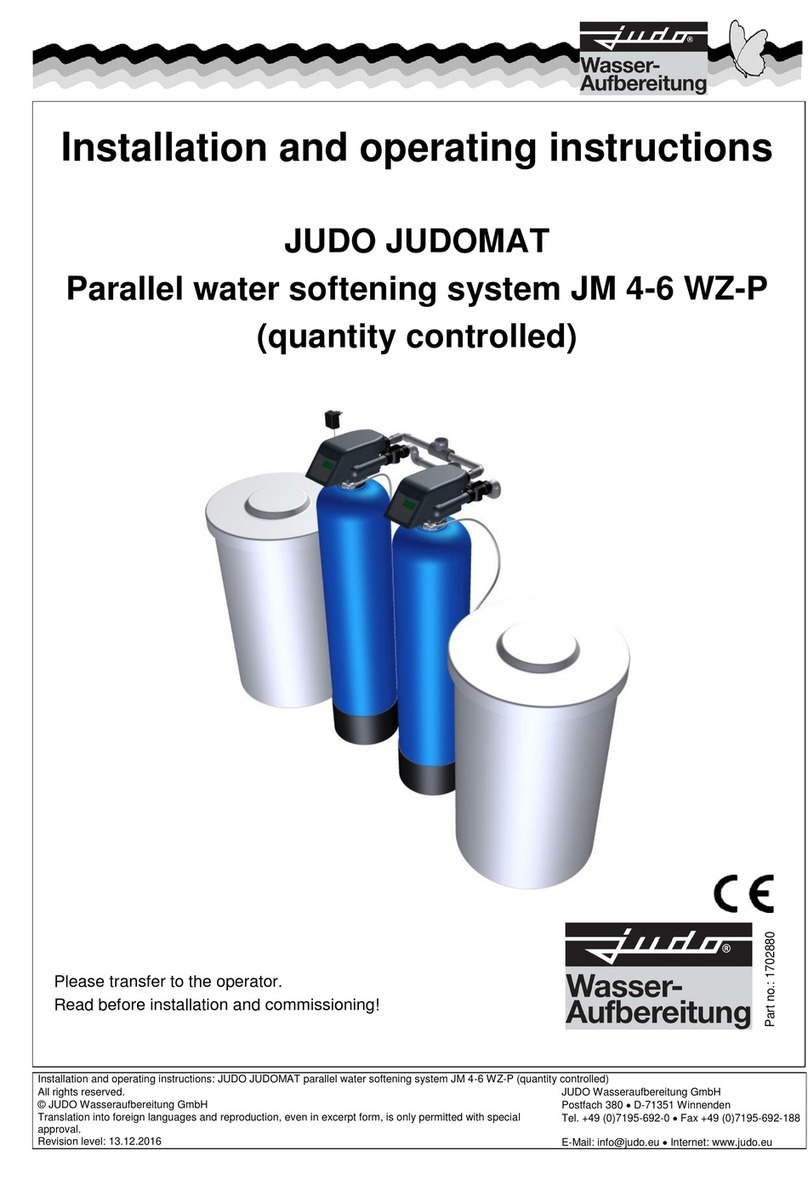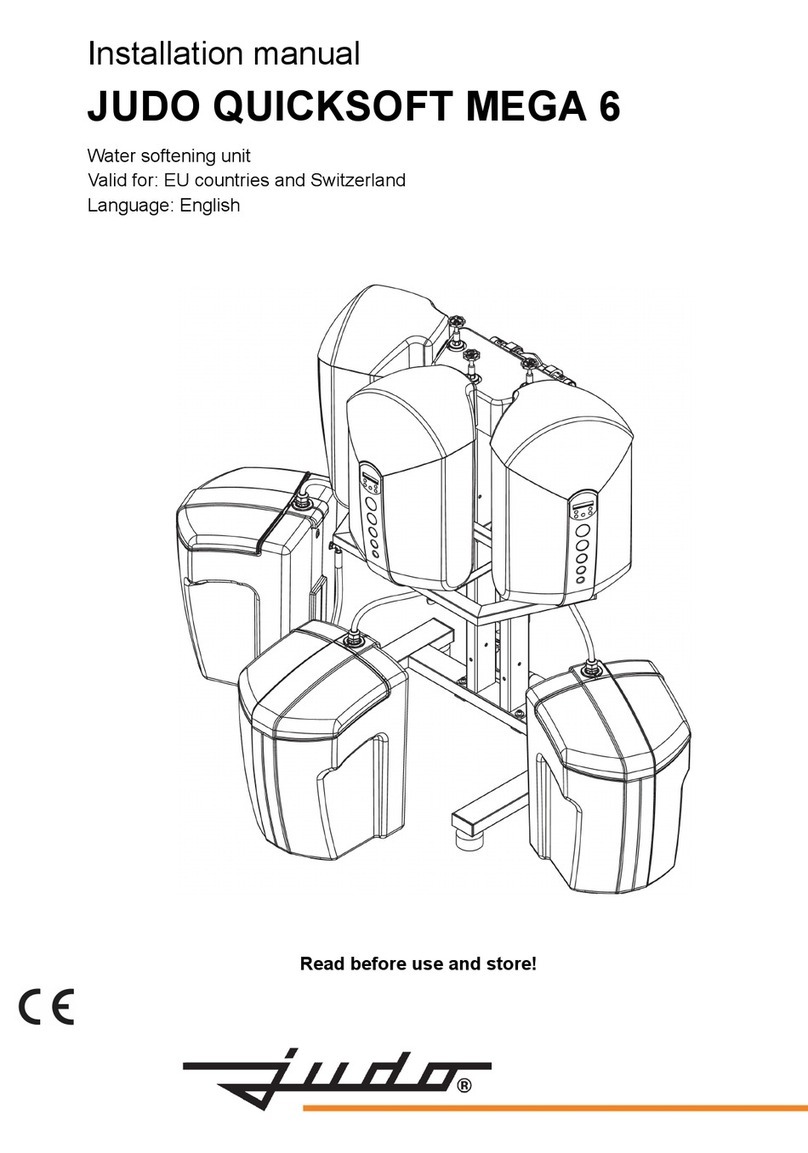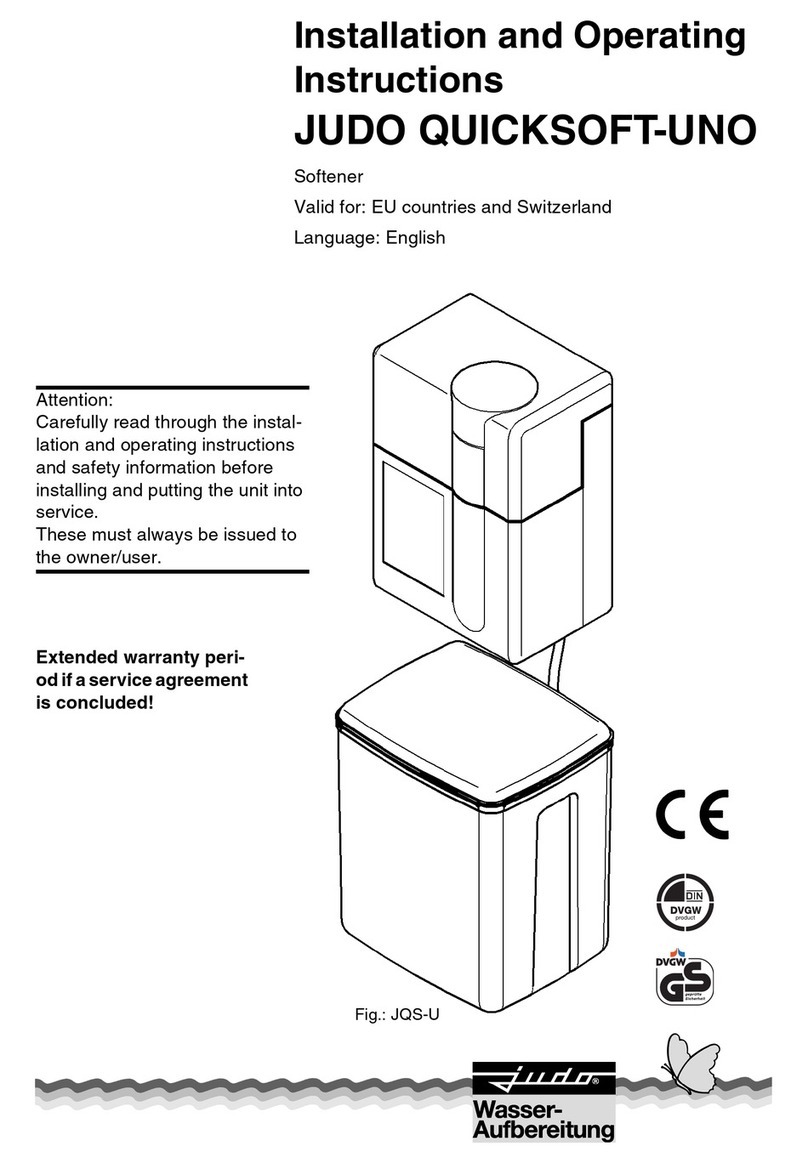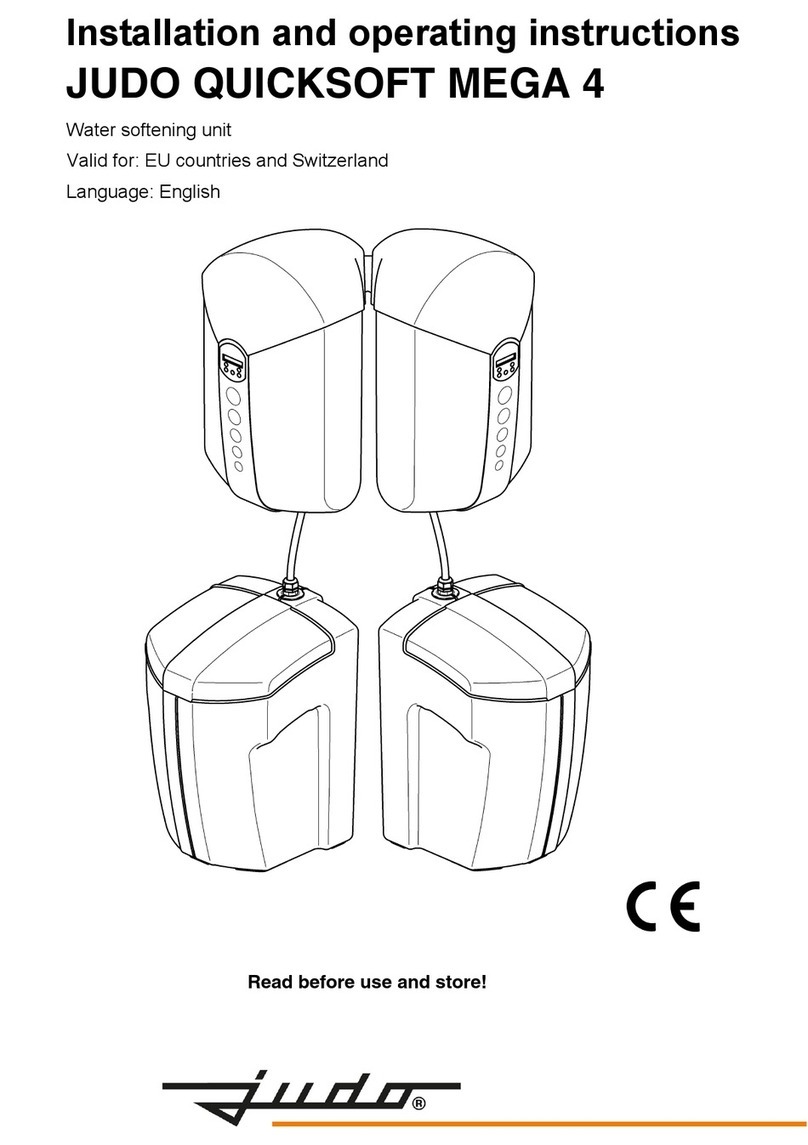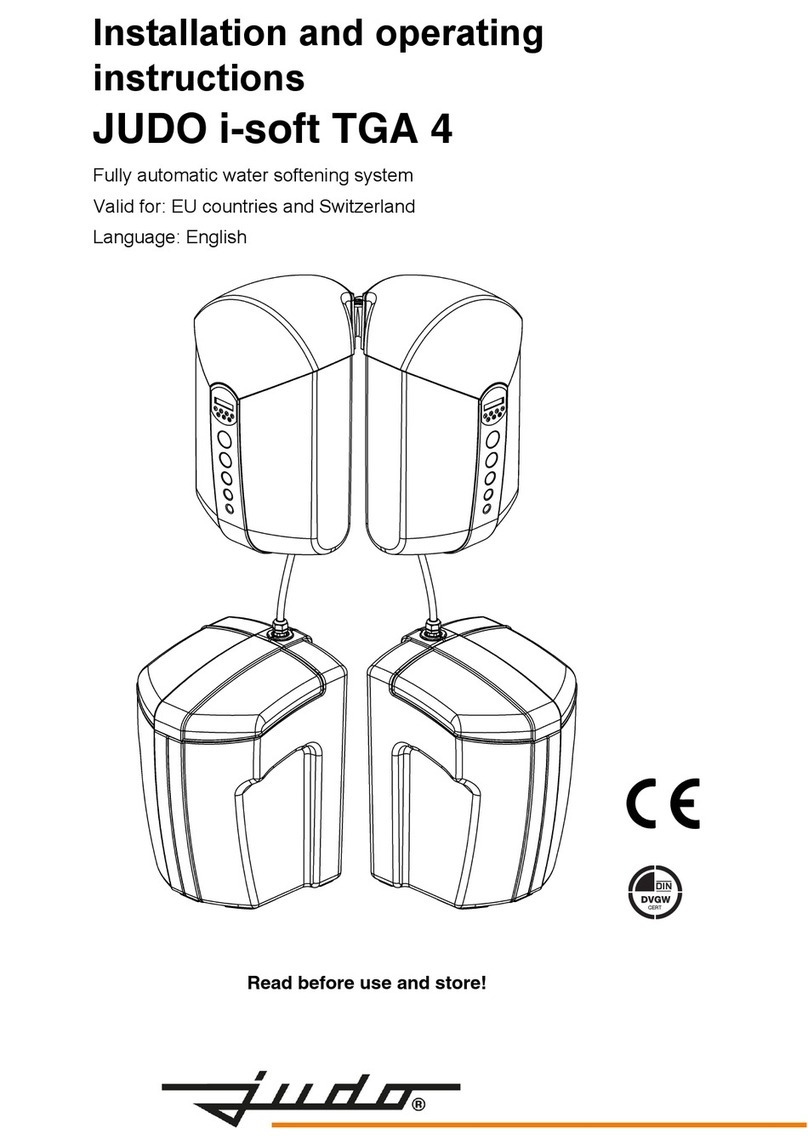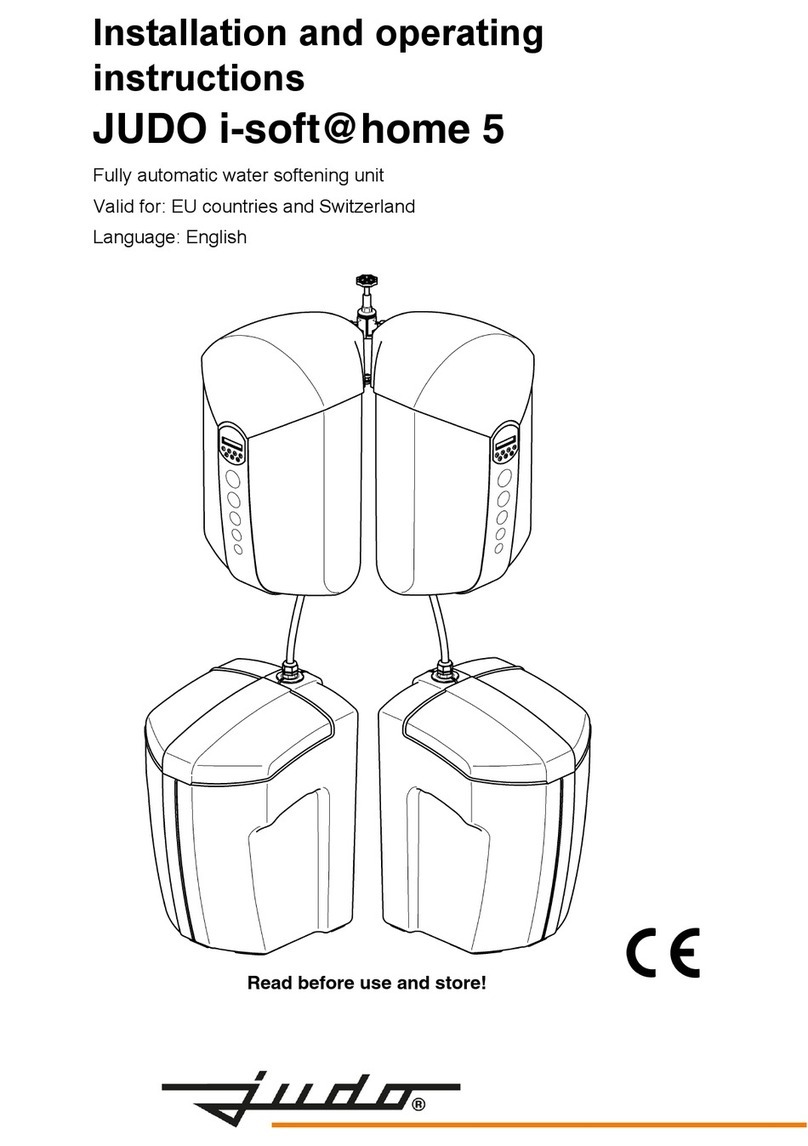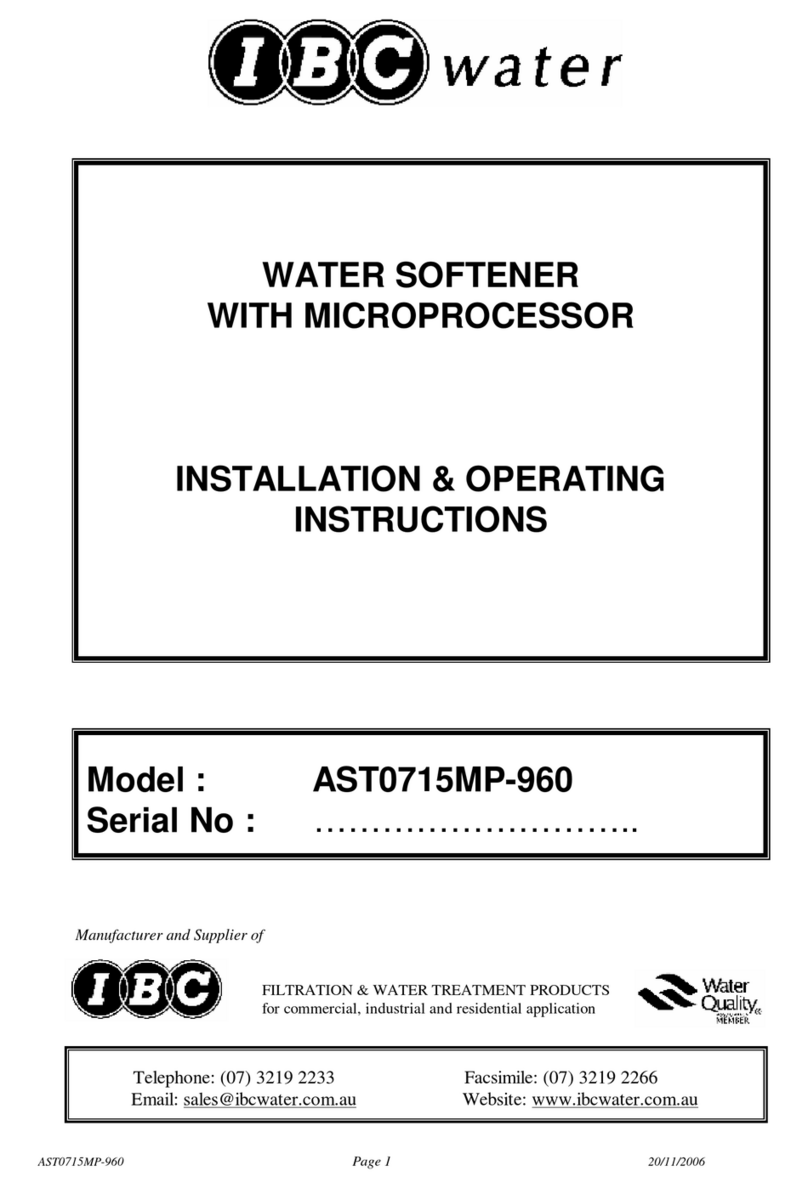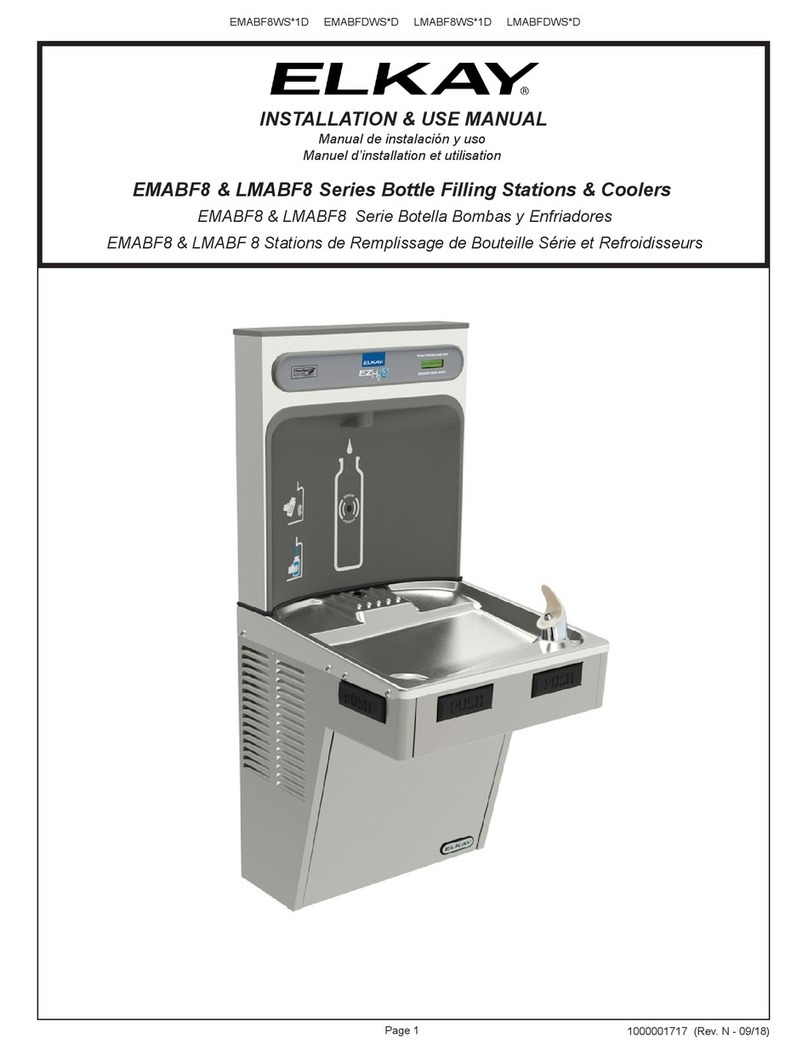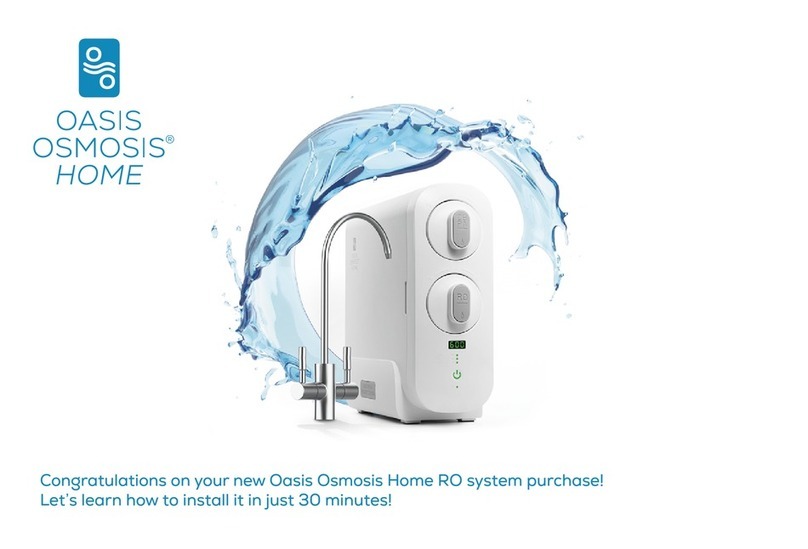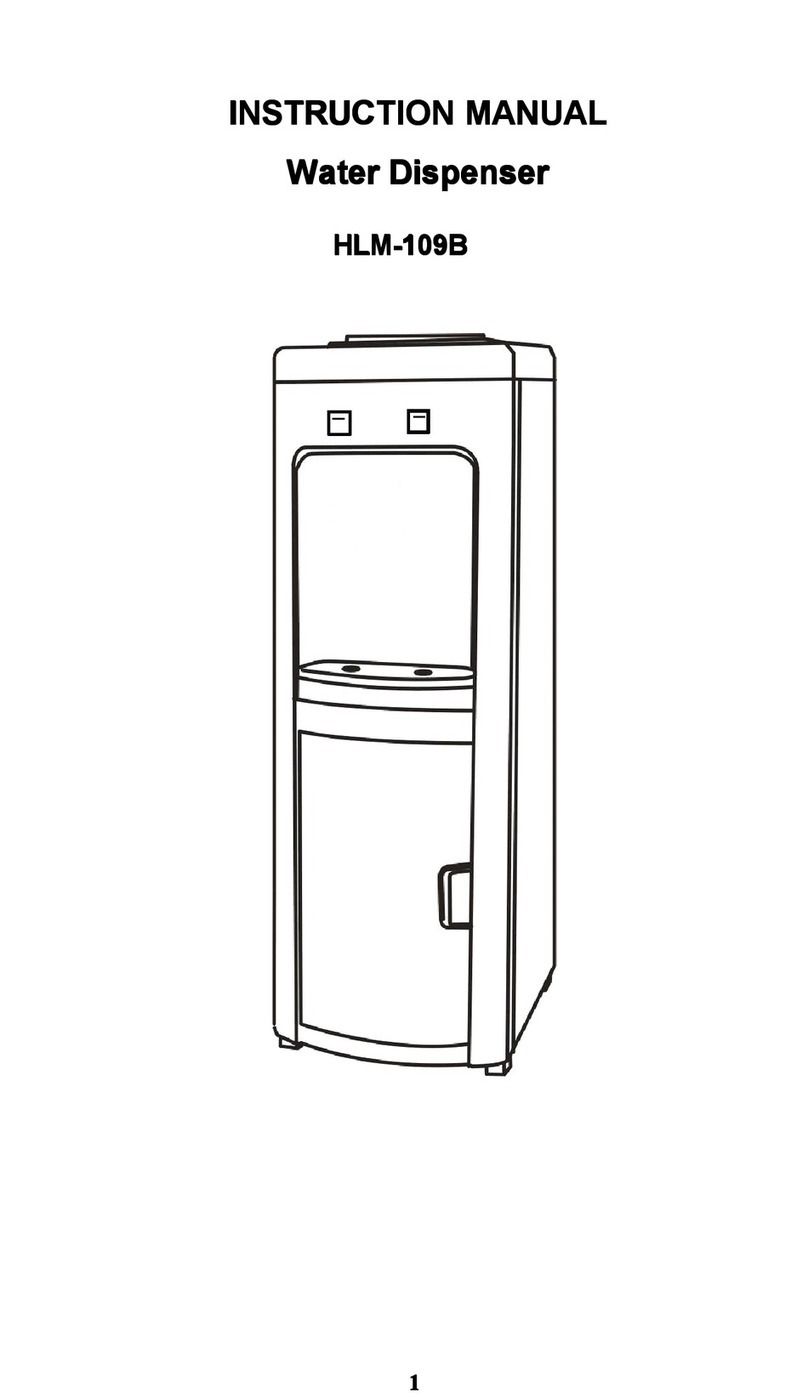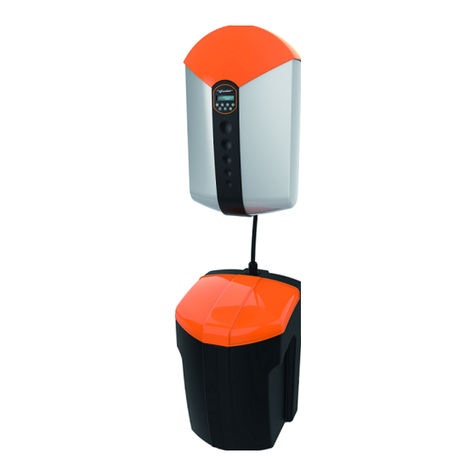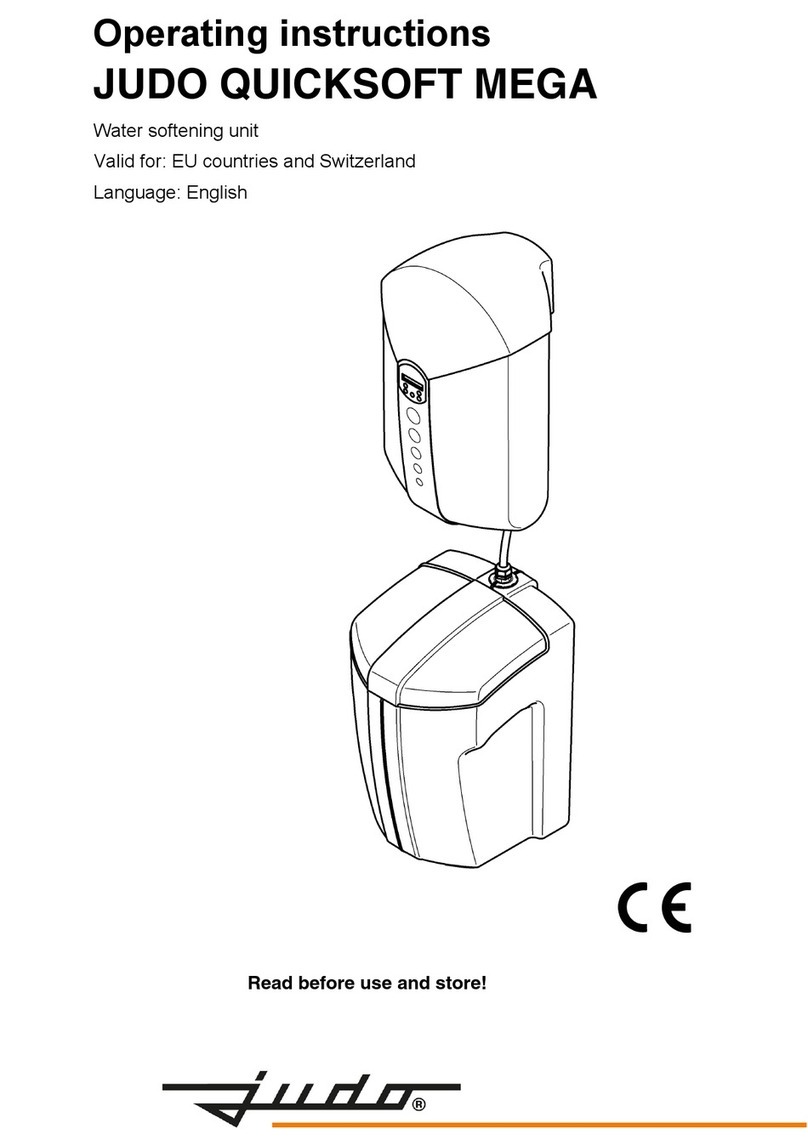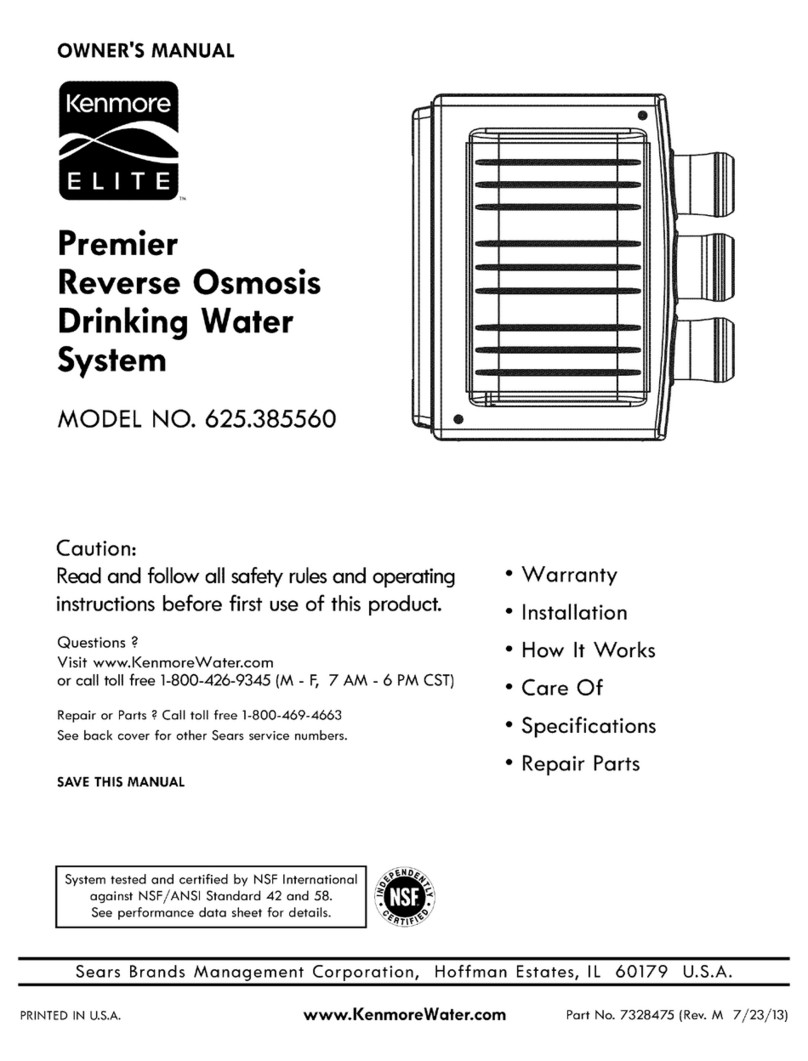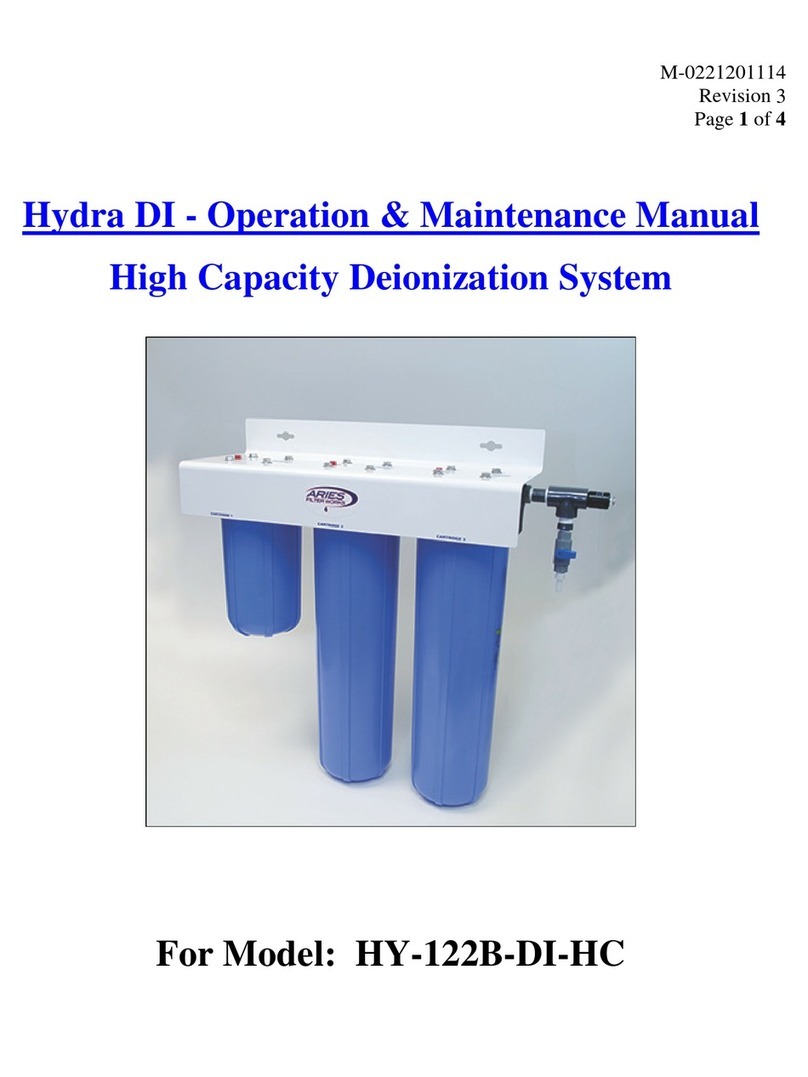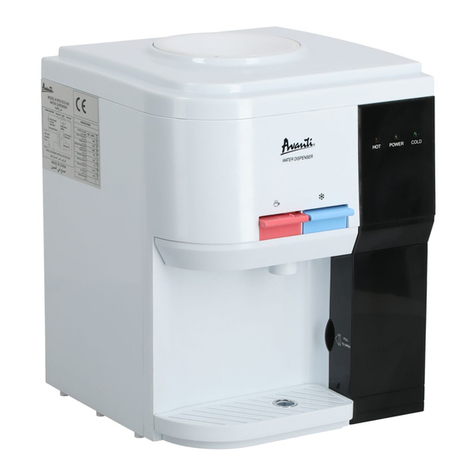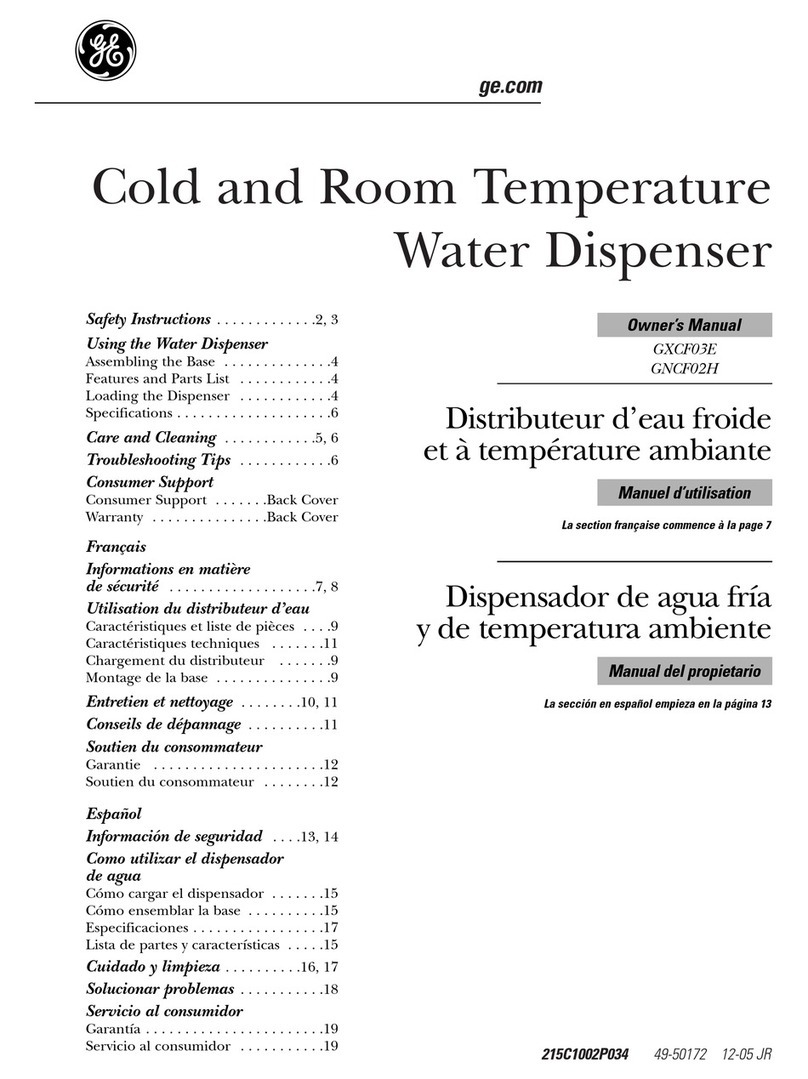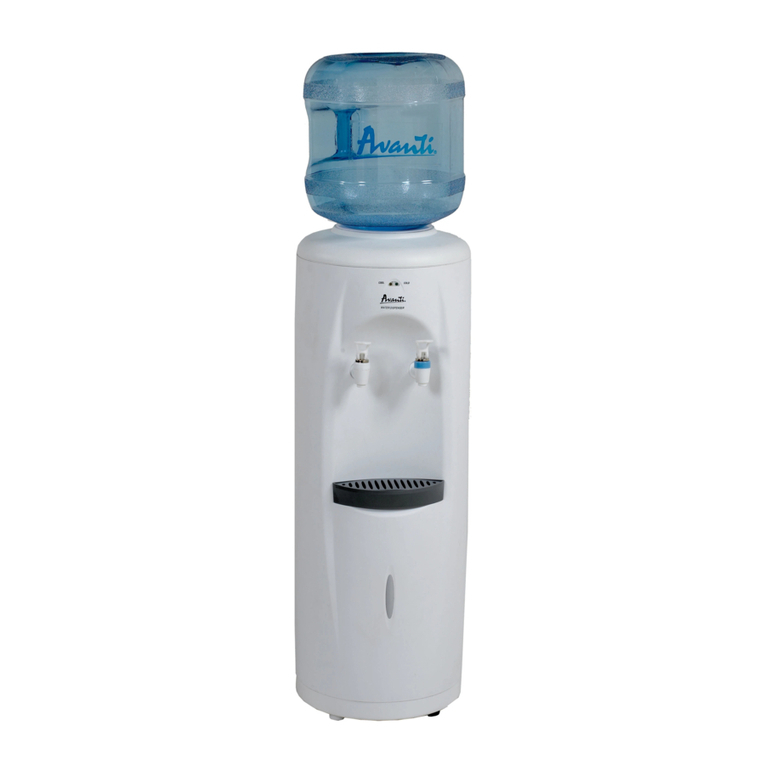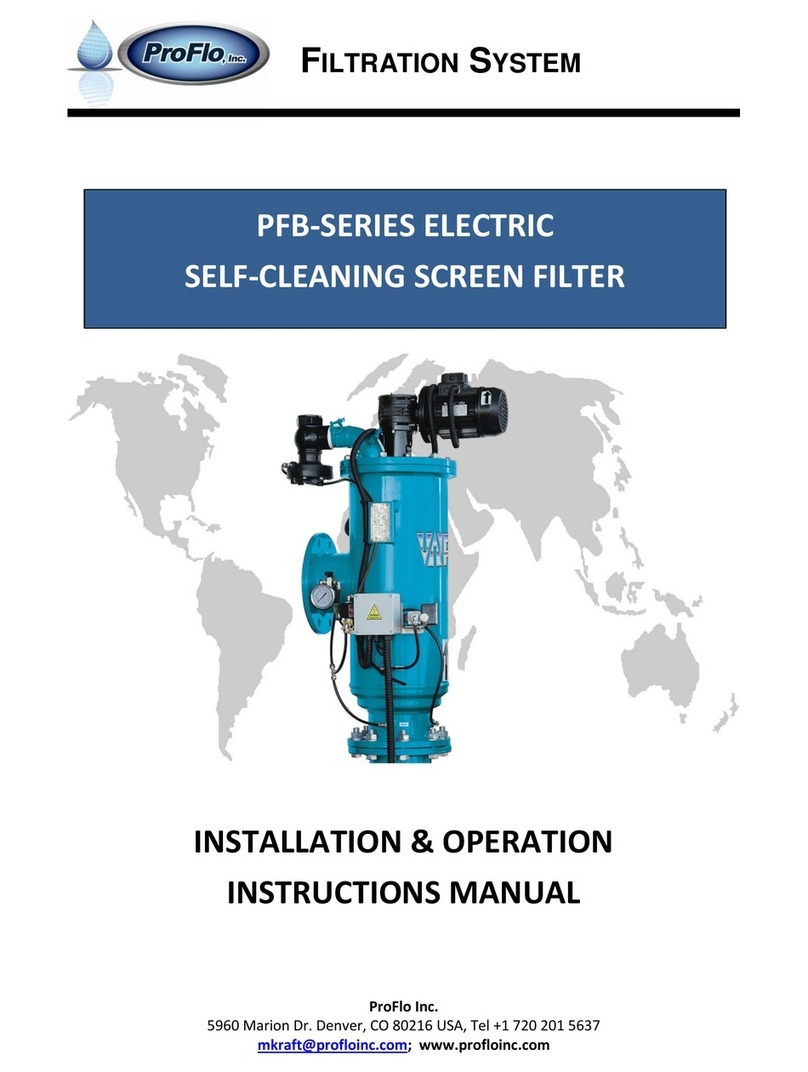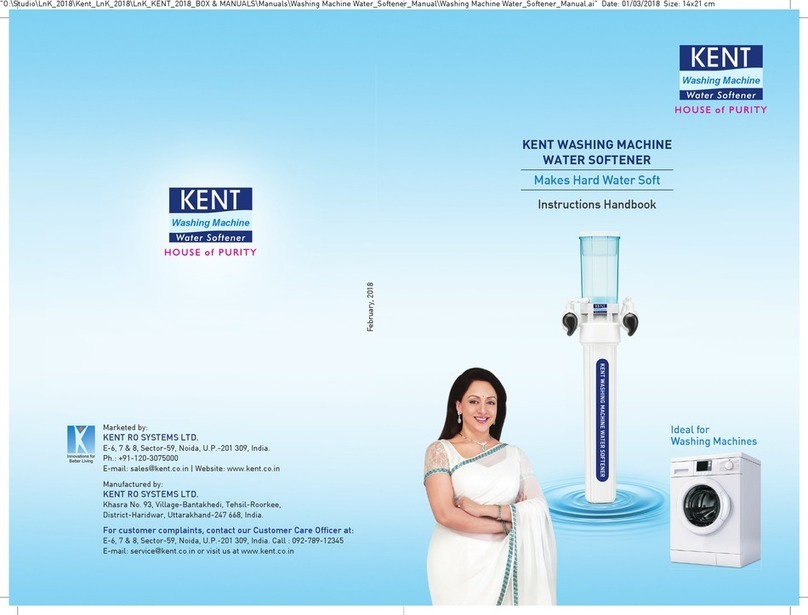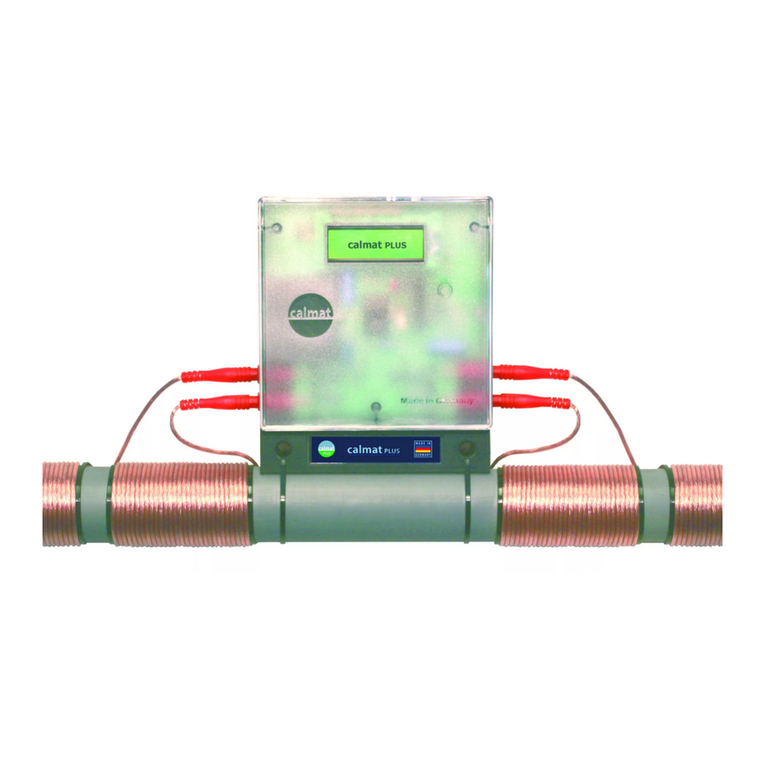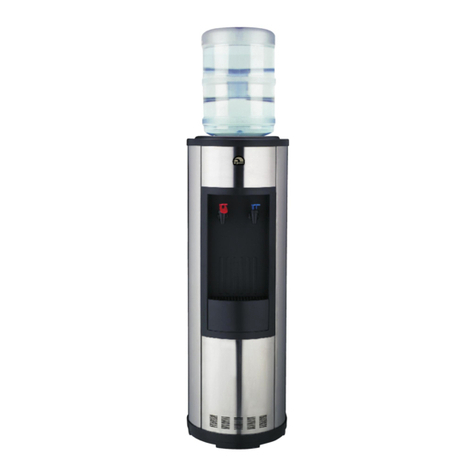
JUDO i-soft@home 7
Intended use
2 Intended use
Both installation and use of the water soften-
ing unit are subject to the applicable national
regulations.
Alongside the operating instructions, the le-
gal regulations applicable in the country and
place of use in respect of accident preven-
tion, the recognised technical regulations for
safe and professional work must be ob-
served.
The water to be softened must comply
with the European Drinking Water Direc-
tive!
The manufacturer/supplier must be consult-
ed before using water of a different quality or
water with additional additives!
The water softening unit is suitable for use in
cold drinking water up to a maximum ambi-
ent temperature of 30 °C.
It is manufactured according to the state of
the art and recognised German safety regu-
lations.
The water softening unit may only be used
as described in the operating instructions.
Any other use or use beyond the specified
use is considered to represent incorrect use.
Additional dangers exist in the event of incor-
rect use and in the event of non-observation
of the danger symbols and safety instructions.
The manufacturer/supplier shall not be re-
sponsible for any resulting damage. All risks
are borne solely by the user.
Intended use includes observance of the op-
erating instructions.
The manufacturer/supplier must be consult-
ed before using the water softening unit out-
side the limits of use described in these op-
erating instructions.
The water softening unit must only be used
as intended in a technically fault-free state,
while maintaining safety and hazard aware-
ness, and in compliance with the operating
instructions.
Ensure that malfunctions are rectified
immediately!
So that the waste water can be safely
drained away both during operation and also
in the event of a possible system defect, the
specifications given in chapter 4.1.1 “Requi-
rements for the place of installation” must be
closely observed!
(see chapter 1.2 “Safety instructions and
dangers due to non-observation”)
The spent regenerating salt is removed from
the water softening columns together with
waste water. Therefore it must not be used
for irrigation or similar purposes.
The designed capacity of the water softening
unit is such that it is capable of partially sof-
tening the entire water requirement for a sin-
gle or multiple family dwelling as well as cor-
responding partial water quantities for hot
water, swimming pool, washing machine and
dishwasher.
2.1 Water pressure
The water pressure must be between 2 bar
and 7 bar.
The water pressure must not fall below 2 bar
as otherwise the function can be impaired! If
the water softening unit is not regularly ser-
viced, the softening function can be im-
paired.
Where the water pressure is greater than
7bar, a pressure reducer must be installed
upstream of the water softening unit (see
fig. 2)
. If the operating pressure is greater
than 7 bar, malfunctions can occur.
